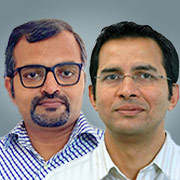Column | 'I was reinvented,' says Santa Claus from the North Pole

Mail This Article
Perhaps no other region in the world is as well-known for its Christmas traditions as the Nordic countries. The dark but snowy winters in Norway, Sweden, Finland, Denmark, and Iceland have inspired a bunch of traditions that capture the popular imagination of Christmas. Santa Claus, also known as Father Christmas, is possibly the most celebrated figure in this jolly tradition.
The Nordic countries have various folk tales about the origin of Santa Claus. However, contrary to common belief, Santa Claus is not a centuries-old imaginary white-bearded man who originated from a common Nordic ancestor.

A corporate reinvention, modern-day Santa Claus, as we know him today, was popularised by a Christmas advertisement created by a Michigan-born artist of Finnish and Swedish descent for one of the largest American corporations.
In 1931, The Coca-Cola Company commissioned Haddon Sundblom to paint Santa Claus and his house at the North Pole for their advertising campaign titled 'Thirst knows no season'.
Sundblom’s painting for Coca-Cola portrayed Santa, dressed in red and white, as a "warm, happy character with human features, including rosy cheeks, a white beard, twinkling eyes and laughter lines”. He was inspired by Clement Clark Moore's 1822 poem "A Visit from St Nicholas".

Through a series of advertisements from 1931 to 1964, Santa not only enjoyed Coke but also visited children with greeting cards and delivered toys.
The invented version of Father Christmas became a global sensation, paving the way for Santa Claus to evolve into an industry of its own. In addition to using the festive season to boost sales, the Santa Claus industry focuses on developing tourist attractions and implementing clear branding strategies.
The Nordic countries have been at the forefront of promoting Christmas tourism and vying for the title of Santa’s official hometown, especially concerning his original snowy abode in the North Pole.
As a Norwegian friend rightly remarked, "the battle over the 'real' Santa is perhaps the only instance where the peace-loving Nordic nations are vehemently argumentative and always at war".
The Santa War
As early as the 1960s, Denmark initiated a huge red mailbox for Santa Claus in Nuuk, the capital city of Danish district Greenland, in a bid to promote tourism.
Kids all over the world started sending their wish lists to Santa Claus, and the employees of the Greenland postal department found themselves busy replying to thousands of letters every December.
However, children slowly stopped receiving replies from Santa Claus as Christmas tourism failed to boost the Greenland economy, and the authorities cut subsidies altogether.

Sweden and Norway also made timely investments to appropriate Father Christmas.
In 1984, Sweden founded a Santaworld in Mora, a charming village with Viking heritage situated on the shores of Siljan Lake. Visitors to Santaworld can meet Tomten, the Swedish version of Santa Claus, and explore the world of trolls, elves, winter ferries, and reindeer.
In 1988, Norway established an all-year Christmas town in Drøbak, believed to be the birthplace of Norwegian Santa Claus, Julenissen. The municipal council of Frogn passed a surprise resolution on December 18, 1989: "As far as the council is aware, the Norwegian Santa Claus must be born in Drøbak. Until proven otherwise, this is considered an established fact, with the consequences it may entail in practice."
In Norway’s Christmas town, the government has sanctioned the use of special street signs that caution drivers to be mindful of Santa Claus.
Finland achieved "major success" in the ongoing battle among the Nordic countries over Santa’s true home. Thanks to the Finnish government’s unprecedented support, the Santa Claus Village in Rovaniemi, located within Finnish Lapland and the Arctic Circle, has flourished as a global tourist attraction since its establishment in 1985.
The Lapland government declared the entire province as Santa Claus land, besides playing a crucial role in renaming the Rovaniemi Airport as the official airport of Santa Claus.
The Santa Claus Village attracts about 500,000 visitors every year, although there was a sharp fall in numbers during the pandemic-hit Christmas season.
Known for its enchanting experience, the Santa Claus Village offers a plethora of activities such as meeting Santa at his Arctic Circle office, reindeer safaris, strolling through Elf’s farmyard, snowmobile trails, visiting a husky park, and relishing Finnish desserts.
Sweating Santa
Global warming is causing significant difficulties for the Santa Claus industry, as the winter wonderland homes of Father Christmas are heating up, resulting in a financial crisis.
As a result of climate change, December snow has become scarcer, adversely affecting the main attraction of Santa tourism – the legendary 'White Christmas'.
“In the last few years, we have frequently experienced rain or warm weather in winter, leading to snow melting and freezing the next day," says an indigenous Sami from Lapland.

Santa’sreindeer are facing a real threat due to climate change in the Nordic countries. The rising temperatures have caused a decline in the availability of natural food sources for the reindeer during the winter months.
The Arctic animals find it extremely difficult to dig down through the snow to get lichens as the snow turns to ice. As per a BBC report, certain reindeer herds have journeyed up to 100 kilometres looking for ice-free lichen that they can access beneath the snow.
Despite the sweat from the planet’s rising heat, the Nordic Santa Claus remains, arguably, the most widespread modern-day myth that has gone global. A few days ago, a mini theme park in Kochi offered a 'Nordic White Christmas Village' experience, featuring the first 'real' Santa in Kerala.
Human beings create myths that often get reinvented at various points in history. Depending on how these myths are used, they can influence society–either fostering harmony and joy or provoking conflicts and aggression. Santa Claus is a joyful myth that transcends cultures with its festive spirit.
(Social anthropologist and novelist Thomas Sajan and US-trained neurologist Titto Idicula write on politics, culture, economy, and medicine)


